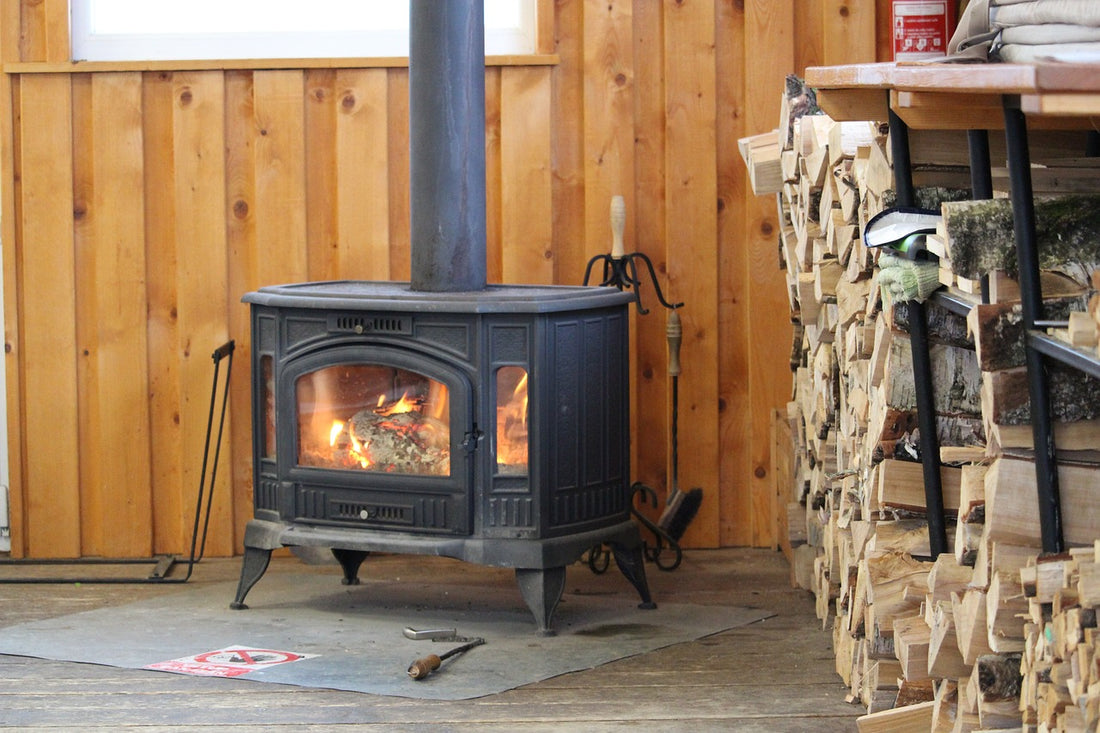What are the best uses for wood ash?

Wood ash, often regarded as a by-product of woodburning stoves and fireplaces, holds a treasure trove of potential. Whether the clinker or fine grey ash it is rich in minerals and can be incredibly versatile in various aspects of our daily lives. In this blog, we'll explore the myriad of uses for wood ash, from gardening to cleaning and even some unexpected applications.
1. Enriching Your Garden:
Wood ash is an excellent source of potassium, calcium, and other essential nutrients. Sprinkle it on your garden soil to raise its pH level, making it less acidic. This is particularly beneficial for crops like tomatoes, asparagus, and beans that thrive in slightly alkaline conditions. The potassium content also promotes flowering and fruiting. Just bear in mind however that some plants prefer acidic soils, such as blueberries, azaleas and rhododendrons, so adding ash to these plants will not be good.

2. Improving your compost:
A sprinkle of wood ashes can be added to your garden compost bin to add even more nutrients. You could even create your own wood ash ‘compost tea’ by soaking ashes in water for 4-5 days. This can then be applied to your soil as required.
3. Natural Pest Control:
Keep garden pests at bay by creating a barrier with wood ash. Simply sprinkle a line of ash around the base of plants to deter slugs, snails, and even ants. The dry texture of ash can be uncomfortable for them to traverse, effectively protecting your garden. Reapply if and when the rain washes away the ash.
4. Add traction to slippery walkways:
This is perhaps more relevant for ash clinker with its gritty texture can provide traction on icy surfaces, while its dark colour can help absorb sunlight and accelerate the melting process.

5. Natural Cleaning Agent:
Wood ash can be used as a mild abrasive cleaner for various surfaces, including glass, metal, and porcelain. Mix it with water to create a paste and scrub away stains and grime. It is even possible to create a natural glass cleaner by mixing wood ash with water and a bit of vinegar. This concoction can effectively clean glass surfaces without the need for chemical-laden commercial cleaners. This of course is perfect for cleaning your stove glass! Remember, to rinse thoroughly afterward to avoid leaving residue.
Watch how to do this!
6. Soaking up driveway spills:
Ever had an oil leak or when changing the oil on your car had a spillage? Wood ash is great at absorbing the spill. The ash’s absorbing properties should allow you to sweep up the spill afterwards.
7. Soap Making:
Historically, wood ash was used to create lye, a key ingredient in soap production. While modern soap-making relies on safer alternatives, traditional methods still employ wood ash in some artisanal soap recipes.
8. Fire Control:
This might sound somewhat counter-intuitive, but believe it or not, fine ash can form an excellent air-tight barrier that will help to extinguish flames. Perfect for putting out the campfire or similar. Always extinguish a fire completely and make sure no embers are left to smoulder as they could re-ignite.
As you can see, wood ash is far from being just a waste material. It's a versatile, eco-friendly resource that can enrich your gardening efforts, help maintain your home, and even find its way into creative projects. So, the next time you clean out your wood-burning stove or fireplace, remember to use it wisely to benefit the garden.
Cautionary Note – When emptying the ash from your fireplace or stove, ensure the embers are cooled and place the ash gently into a bucket or ideally a specific ash removal tray that has a lid to contain the ash dust. Be sure not to inhale any ash dust as fine particulates are not good for your health. Similarly, when tipping the ash in the garden, avoid dust blowing over you and do not apply ash direct onto plants.









No comments